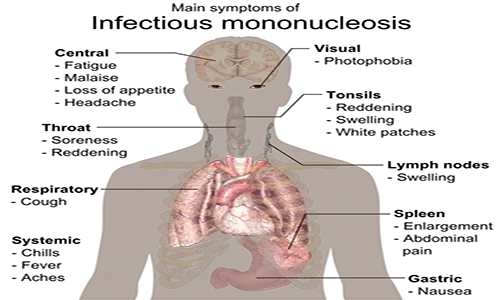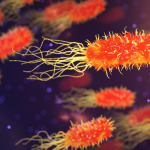1. Infectious mononucleosis is a viral infection.
• It is widespread infection caused by Epstein-Barr virus (EBV). It is a member of the herpes virus family (Herpesviridae).
• The virus is named after the two researchers who discovered it; Michael Anthony Epstein and Yvonne Barr.
• It is also known as Human Hepesvirus 4 (HHV-4) and one of the most common virus that occurs only in humans.
2. Mono Disease is another term for infectious mononucleosis.
• Mono is the shortened word for mononucleosis which is term used to describe abnormally high fraction of monocytes (phagocytic white cells) in the blood.
• Other terms associated with mono disease are Glandular fever, Pfeiffer’s disease, Filatov’s disease.
3. Mono disease is mostly seen in teenagers and young adults.
• The virus infects almost everyone but it is more likely to affect adolescents.
• Older adult rarely get infected with the virus as they have already developed immunity.
• Children who get the infection can still attend school activity, however the symptoms may say otherwise.
• Symptoms like feeling of being unwell, headache and tiredness may interfere with the child’s school performance.
• Once recovered, period of lassitude may last up to 6 months.
4. Mono disease is a self-limiting disease.
• Medication is given to alleviate symptoms like analgesics for pain and fever.
• Aspirin should not be given as it may lead to Reye’s syndrome, which is aspirin-induced disease in viral infection.
• With enough rest, fluids and proper diet, the disease will resolve on its own.
5. Mono disease can be transmitted through direct contact with saliva.
• The disease is colloquially known as kissing disease.
• The virus primarily infects the oropharynx, where viral replication takes place.
• They are in abundance on the salivary glands and mucosal membrane.
• Kissing a person infected with the virus or sharing contaminated utensils can facilitate transmission of the disease.
6. Initial symptoms of mono disease are vague.
• It is often unrecognized as it may be associated with other kind of infection.
• Fever, loss of appetite, swollen lymph nodes and muscle pain may be experienced by the patient but it is quite non-specific to suspect mono infection.
• Symptoms appear 4 to 6 weeks after infection and in some cases may develop slowly.
7. Mono spot test is used to determine infectious mononucleosis.
• Also known as heterophil test wherein a small amount of blood sample is taken to look for antibodies which are made by the body to fight the virus which is usually present and detectable after 2 weeks after being infected.
• Elevated white blood cell atypical lymphocyte is associated with mono disease.
8. Mono disease doesn’t work on antibiotics.
• Antibiotics are used for bacterial infection.
• Sore throat is one of the key symptoms of mono infection which can be mistaken with bacterial infection which is widely treated with antibiotic therapy.
• Mono disease is a viral infection, so anti-bacterial drugs won’t work.
9. Ruptured spleen is a life-threatening complication of mono disease.
• Epstein-bar virus is a relatively complex organism that may cause serious and lethal complications. Spleenomegaly (enlargement of the spleen) is caused by proliferation of mononuclear cells in the spleen.
• Pain felt in the upper left of the abdomen is the most common clinical symptom of spleen involvement.
• Spontaneous spleenic rupture is rare but is the most frequent cause of death from mono infection.
10. After mono infection, person may acquire immunity from the virus.
• No immunization or vaccine available to preventive measure.
• However, once infected the virus stay dormant in the body for life and give the person immunity.
• Relapse is very rare and is seen on immunosuppressed individuals.











Leave a Reply